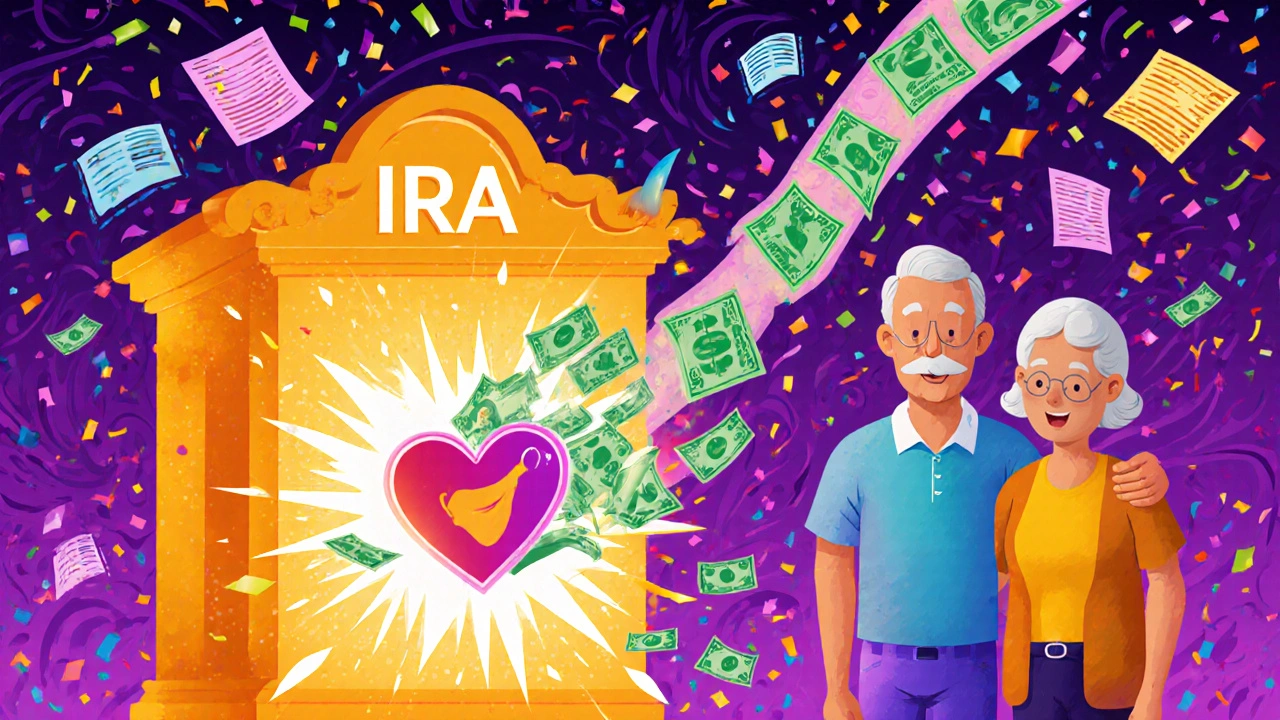Charitable Giving from IRA: How to Donate Tax-Smartly in 2025
When you donate from your charitable giving from IRA, a tax-efficient way to support nonprofits using required minimum distributions. Also known as a qualified charitable distribution, it lets you send money directly from your IRA to a charity without counting it as taxable income. This isn’t just a nice gesture—it’s a smart move if you’re 70½ or older and required to take money out of your retirement account each year.
Most people don’t realize they can skip paying taxes on up to $100,000 per year given directly from their IRA to a qualified charity. That’s the qualified charitable distribution, a IRS-approved method to transfer IRA funds to charity tax-free. Unlike writing a check from your bank account, a QCD reduces your adjusted gross income, which can lower your Medicare premiums and avoid triggering taxes on your Social Security benefits. It’s not a deduction—you don’t itemize—but it cuts your taxable income at the source.
Many people pair QCDs with donor-advised fund, a charitable account that lets you donate assets now and recommend grants to nonprofits later. If you have appreciated stock or real estate, you can move it into a DAF, get an immediate tax break, and then use your IRA’s QCD to cover annual giving without touching your cash. This way, you’re using two tools together: one to reduce taxable income, another to stretch your giving over time. In 2023, over $207 billion sat in donor-advised funds, showing how widely this strategy is used.
Don’t confuse QCDs with regular donations. You can’t take a charitable deduction and do a QCD for the same dollar. The IRS treats them as separate paths—one reduces your income, the other reduces your tax bill through itemizing. But if you’re taking your required minimum distribution anyway, using it for charity makes sense. You’re not losing money—you’re redirecting it where it matters, while keeping more in your pocket.
Who benefits most? People who don’t itemize deductions, those with high income who get hit by Medicare surcharges, and anyone who wants to simplify their giving. You don’t need a financial planner to do this—just contact your IRA custodian and ask for a direct transfer to your chosen charity. Most firms have a form for it. The key is to make sure the money goes straight from the IRA to the nonprofit. No checks, no deposits into your personal account.
And if you’re younger than 70½? You still have options. You can withdraw from your IRA, pay the tax, and then donate the rest. But that’s less efficient. The real power of charitable giving from IRA comes when you avoid the tax altogether.
Below, you’ll find real guides that break down how to set up a QCD, when to use a donor-advised fund instead, and how to avoid the common mistakes that cost people thousands in unnecessary taxes. These aren’t theory pieces—they’re step-by-step instructions from people who’ve done it.





